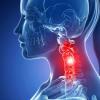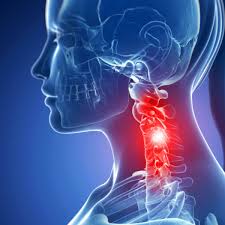
Breaking News
 The Hidden Secrets of Natural Milk
The Hidden Secrets of Natural Milk
 Diddy Trial Drama: Star Witness Vanishes Ahead Of Explosive Testimony
Diddy Trial Drama: Star Witness Vanishes Ahead Of Explosive Testimony
 PTSD treatment that excites a nerve in your neck wipes symptoms completely
PTSD treatment that excites a nerve in your neck wipes symptoms completely
 High-tech lactation pad measures medication in mothers' milk
High-tech lactation pad measures medication in mothers' milk
Top Tech News
 Cab-less truck glider leaps autonomously between road and rail
Cab-less truck glider leaps autonomously between road and rail
 Can Tesla DOJO Chips Pass Nvidia GPUs?
Can Tesla DOJO Chips Pass Nvidia GPUs?
 Iron-fortified lumber could be a greener alternative to steel beams
Iron-fortified lumber could be a greener alternative to steel beams
 One man, 856 venom hits, and the path to a universal snakebite cure
One man, 856 venom hits, and the path to a universal snakebite cure
 Dr. McCullough reveals cancer-fighting drug Big Pharma hopes you never hear about…
Dr. McCullough reveals cancer-fighting drug Big Pharma hopes you never hear about…
 EXCLUSIVE: Raytheon Whistleblower Who Exposed The Neutrino Earthquake Weapon In Antarctica...
EXCLUSIVE: Raytheon Whistleblower Who Exposed The Neutrino Earthquake Weapon In Antarctica...
 Doctors Say Injecting Gold Into Eyeballs Could Restore Lost Vision
Doctors Say Injecting Gold Into Eyeballs Could Restore Lost Vision
 Dark Matter: An 86-lb, 800-hp EV motor by Koenigsegg
Dark Matter: An 86-lb, 800-hp EV motor by Koenigsegg
 Spacetop puts a massive multi-window workspace in front of your eyes
Spacetop puts a massive multi-window workspace in front of your eyes
PTSD treatment that excites a nerve in your neck wipes symptoms completely

This new method could provide a glimmer of hope for the millions of people around the world who suffer from PTSD – and that includes a much wider gamut of patients beyond military veterans who have faced combat.
Let's get a sense of what the researchers are working with here. The vagus nerve is the main nerve of your parasympathetic nervous system, which controls key involuntary body functions like your heart rate, digestion, immune system, and even your mood.
This is also the the largest parasympathetic nerve in the body, and it runs from the brain to the large intestine. There are left and right vagal nerves that join to form the vagal trunk. Stimulating these nerves with electrical impulses can help treat epilepsy and depression, and could also help address conditions like rheumatoid arthritis and PTSD.
This new treatment works in tandem with a traditional PTSD treatment called prolonged exposure therapy (PET), where patients gradually confront the memories and situations they've been struggling with, in a controlled and safe environment.
The research team, which includes scientists at The University of Texas at Dallas and Baylor University Medical Center, combined PET with the delivery of short bursts of stimulation of the vagus nerve through a small device fitted to a participant's neck.
The researchers conducted a Phase 1 trial with nine patients over 12 vagus nerve stimulation (VNS) sessions. In assessing the participants four times over the course of six months after the therapy had concluded, they found that all the patients were symptom-free.
"In a trial like this, some subjects usually do get better, but rarely do they lose their PTSD diagnosis," said Dr. Michael Kilgard, a neuroscience professor at UT Dallas and an author of the paper that appeared in the journal Brain Stimulation in March. "Typically, the majority will have this diagnosis for the rest of their lives. In this case, we had 100% loss of diagnosis. It's very promising."
VNS is thought to enhance synaptic plasticity, which refers to the brain's ability to change and adapt at the level of its neural connections. PET shows the brain what connections need to change (those involved in the fear response to trauma memories). Meanwhile, VNS provides a chemical 'boost' (through neuromodulators, or chemical messengers that can influence neural activity, like acetylcholine and norepinephrine) that makes the brain's wiring more capable of changing during that specific time.

 Node without Consent
Node without Consent

